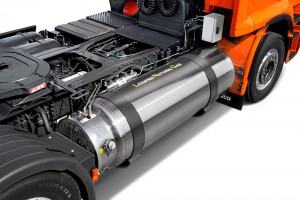The decarbonisation of the economy as a long-term goal
2050 is set to become a key year for the transport sector in Europe. This is the date set by the European Union to reach the economic decarbonisation goal, a process which will reduce energy consumption and move towards an economic model that is more environmentally-friendly.
More specifically, the European Union roadmap states that there must be an 80% drop in greenhouse gas emissions in the continent compared to 1990 levels by 2050.
Change to the energy model in the transport sector
Freight transport is currently one of the main vectors in the consumption of fossil fuels. The processes developed in the sector and the measures to be adopted during the next few years will have a direct and very significant effect on the decarbonisation process and compliance with the 2050 goal.
While a range of measures and innovations are aimed at promoting transport sustainability, the key challenge involves reducing the dependence on petroleum-based fuels. This involves the progressive adoption of other energy sources, including those used today as clear alternatives, such as electricity and natural gas.
Many experts argue that gas will be the main ally of the transport sector, particularly in road freight transport, during the decarbonisation process. Electricity does not seem to be the most viable short-term alternative to fossil fuels, due to a shortfall in technological advances. Natural gas, a highly efficient and reliable fuel could become an ideal transition energy source while moving towards the electrical economy of the future.
One good example of the potential of gas as a fuel is provided by the maritime sector, where this energy is already widely used: the increased purchase of natural gas-powered vessels, with many ports around the world adapting their facilities for their supply.
Natural gas in road transport
However, we have already specifically mentioned road transport within the freight transport sector, where an important question must be asked: Why does Liquefied Natural Gas (LNG) also involve a significant change for this type of transport?
Road transport is one of the main sources of greenhouse gas emissions in this sector. A very high number of transport operations use this means, thanks to its versatility, where practically any location can be reached by road. The final stage of any type of transport operation, including ones starting off by sea or air, is by road, in order to deliver the product to the client.
LNG is also leading the way in this type of transport, thanks to the benefits offered in terms of autonomy, availability and ease of use. While electric batteries are not yet able to compete with traditional engines, natural gas-powered units already perform very similarly to those used in diesel fuel.
And alongside the boom in the range and use of LNG, facilities and services designed to support them are also being developed. The most obvious feature is gas filling or supply stations, with 3,408 already in place in Europe (according to data from NGVA Europe in 2016). However, these only grew by 50% in 2017 in mainland Spain (according to Gas Natural records).
Basically, aside from being a future alternative for road or sea transport, gas is also a current, realistic and booming alternative in many respects.
Everything seems to therefore indicate that this energy will play a very important role in decarbonising the transport sector. The success of this process , as pointed out at the beginning of the article, is crucial for the general decarbonisation of the economy that the European Union hopes to achieve by 2050.


